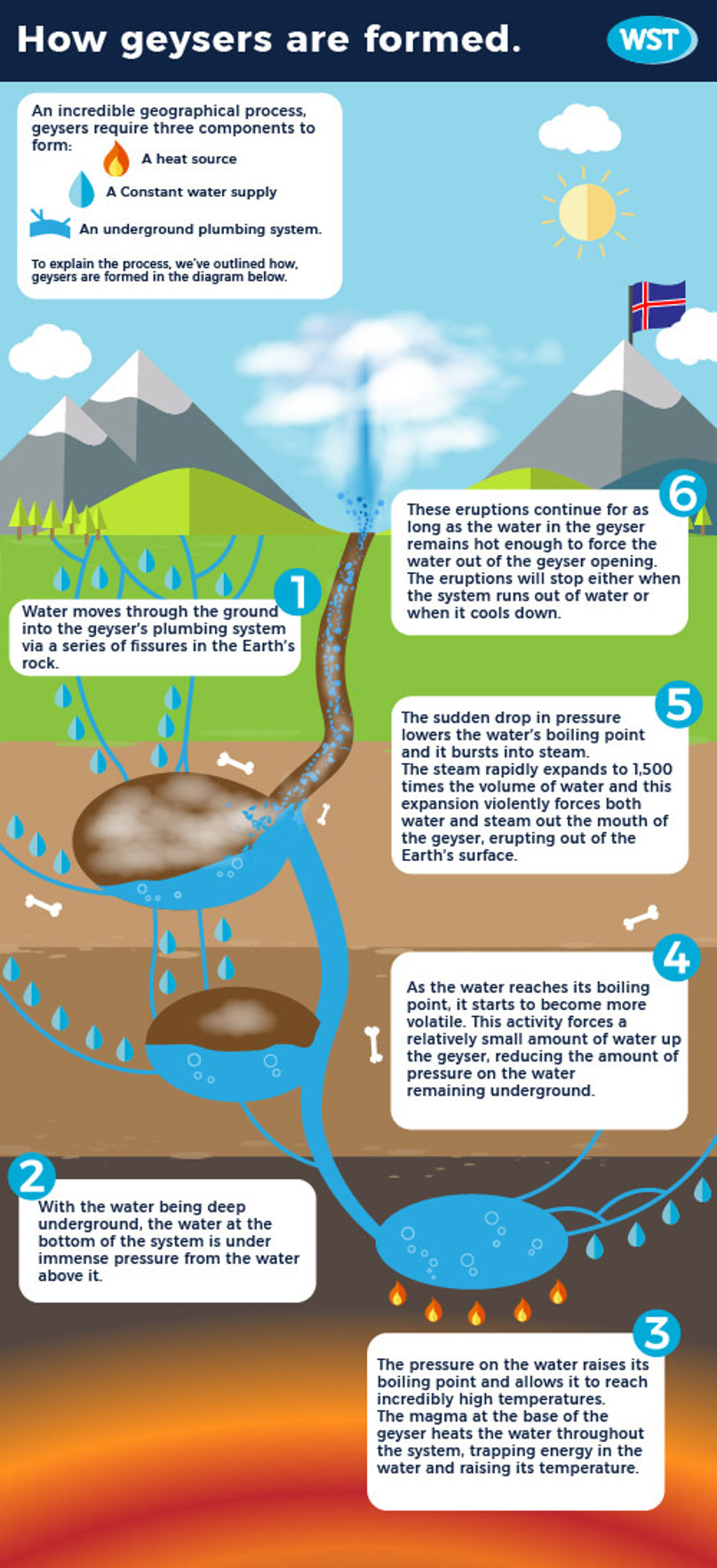If your students embark on a school trip to Iceland, a visit to the epic Strokkur geyser is a must. Since this is an educational trip however, why not help your students get to grips with the formation of geysers before you go? We’ve put together a quick guide to help answer your students’ questions throughout your next Iceland school trip.
For geysers to form, they need three components: a heat source, a constant water supply and an underground plumbing system. The underground plumbing system is usually made up of a series of fissures in the Earth’s surface, reaching deep underground and connecting it to the geyser’s heat source.
The fissures that make up a geyser in the Earth’s rock often have a mineral lining, sealing the fissures and preventing water from seeping out. These minerals are usually found in volcanic rock, which contains a high concentration of rhyolite.
The majority of geysers pull water from surrounding lakes or rivers. As geysers need a heat source, many of them occur in areas with high levels of geothermal activity. The water is heated by magma situated around 5 kilometres below the Earth’s surface – which is a lot closer than usual. The movement of the tectonic plates also creates a great amount of energy, which can also act as a heat source for the geyser.
The diagram below will walk you through the geyser formation process step by step.

If you would like to arrange a geography school trip to Iceland so your students can witness this incredible process up close, get in touch with one of our expert travel consultants today who will be happy to help.